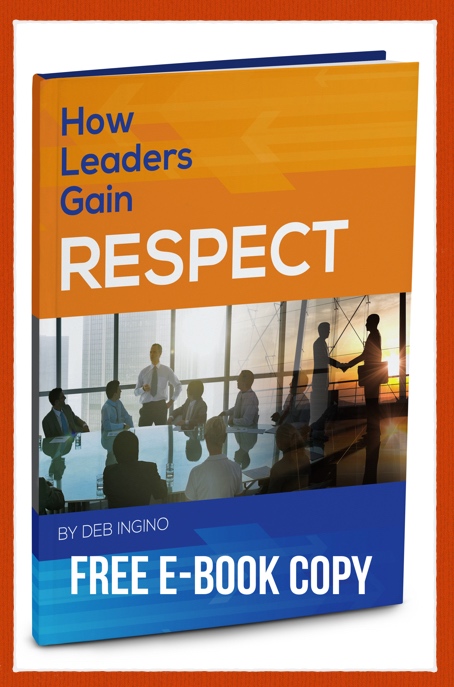
Image Credit: Shutterstock
Being a leader has its perks…and its responsibilities as well.
One of the biggest responsibilities is people. As a leader, you are responsible for people in all aspects of the business. In fact, essentially all business is about people – the people who purchase the product or service and the team behind it.
Business is a great network of people helping people…until they don’t.
That is where the perks of leadership meet the responsibilities of leadership.
As a leader, sooner or later, you will have to deal with some type of “people” issue.
- Customers
- Partners
- Team Members
- Vendors
Creating Great Experiences
Much is made of creating a great customer service experience. If the goal is to create and maintain a great network of people helping people, how can leaders extend the idea of an excellent customer experience to an excellent team and vendor experience as well?
“Not-so-great” Experiences
“I don’t get it. I worked really hard to beat the deadline on this high priority project. I went to added lengths to deliver on quality, and all the boss wants to know is…what about the other project, why isn’t that done yet?”
“I made one mistake, and that is all they notice. Just once, I’d like to get a thank you for my work.”
“ABC company executives pushed to get these deliverables ahead of schedule; but they take their time paying vendor invoices.”
These are all examples of people issues, and people issues disrupt the network of a great experience.
How can you create a better experience?
1. Focus on people.
Companies pay homage to employees, often declaring they are their greatest assets. Yet, when it comes to cutting costs, RIFs are the first consideration. While it is true that the highest costs are normally related to employee compensation; it is also true that the highest value is there as well.
To create a great customer or client experience, you need a great team. Creating a great team does involve costs for compensation and development, as it should.
But it also involves some leadership practices that involve no monetary compensation – simple acts like saying, “Thank you,” for a job well done; celebrating wins before diving into the next big things; recognizing actions of added value; and providing opportunities for your team members to work in and showcase their unique skills and strengths.
2. Focus on people at all levels.
Companies can be guilty of being so focused on the end consumer that they neglect those who got them to that end. This includes internal and external team members, partners, and vendors.
Stop and consider those with whom you interact at all levels, and make each encounter a good one. Learn to know people, observe their personalities, and listen as they talk with you. The next time you see them, ask about their family or their favorite team; or reference something they mentioned in previous conversation. These personal connections matter across all people and all levels.
We are a highly connected world. A vendor today could be your best customer tomorrow. Potential customers could be checking your company’s glassdoor reviews from employees.
Every encounter and experience matters.
If you create a great experience across your team and vendors, that will carry over to great customer experiences as well.
3. Focus on people at all levels all the time.
“Dealing with people is exhausting. I wish I didn’t have to do it all the time.”
Unfortunately, for a leader, dealing with people is an “all the time” experience. But fortunately, it can be a good experience, even when it is challenging.
For example, you have a normally stellar employee who begins to slack off. They come in late – a few minutes one day, a half hour the next. You notice they are less productive than usual. This goes on for a week or two. You could let this continue to the point where you are exhausted, or you can talk with the employee.
“I’ve noticed you are not your normal self recently. This is not like you. Are you doing okay?”
“Thank you for asking. My son was just diagnosed with cancer. I am trying to deal with the challenges it brings.”
Simply learning the “why” behind the behavior allows you to understand the situation and help address the issue in a way that benefits both of you. This creates an employee experience your employee will long remember.
It usually isn’t dealing with people that is exhausting to a leader; it is NOT dealing with them to the point of identifying and resolving the underlying issue.
What do you want as a leader?
- Solid partnerships
- A loyal employee base
- Satisfied customers
- Good vendor relationships
You can have a great network of people helping people, simply by creating great people experiences across all levels.
Great experiences stem from great communication. Click here to learn about the Maxwell Method of Communication Impact Report.
As the CEO of Strength Leader Development, Deb Ingino is a highly sought-after international executive mentor, coach, trainer and speaker. Deb is well versed in global business operations and helps business leaders and their teams to discover and leverage their strengths, so they can create highly collaborative teams that deliver great results. With a refreshingly direct style, Deb helps leaders and their teams to deliver profitable results. Connect with Deb to learn more about her mentorship and coaching programs to equip you with advanced strategies to elevate your results.
When you have a strong team that collaborates well,
you have a competitive advantage.
Click here to get instant access to the complimentary FREE e-book!

+ view comments . . .